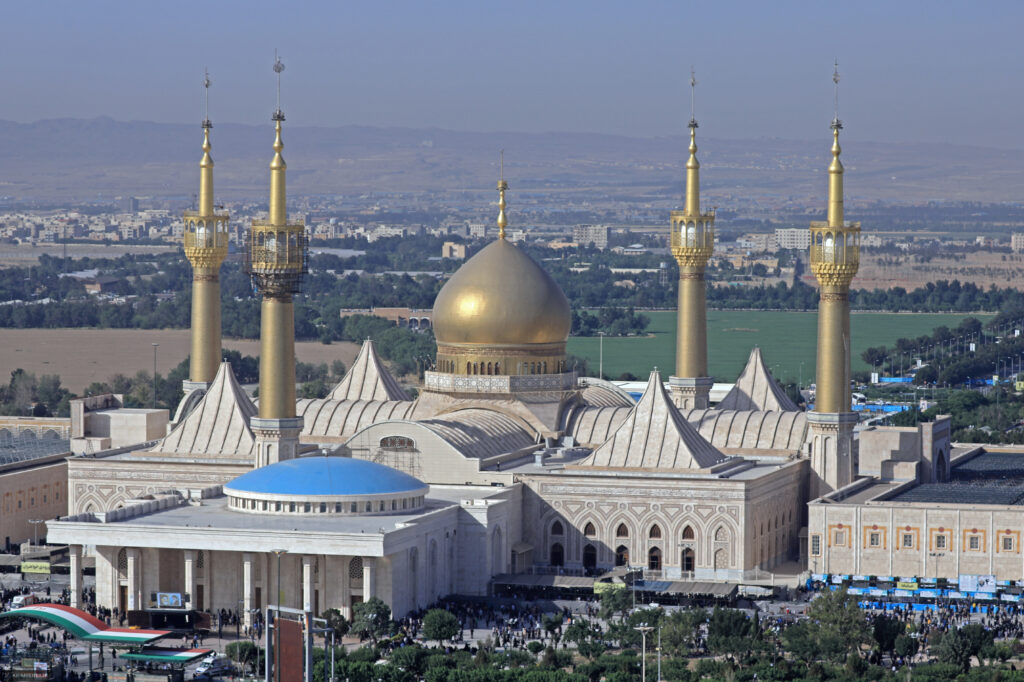Imam Khomeini Shrine: A Sacred Landmark in Tehran

Imam Khomeini Shrine, located on the outskirts of Tehran, stands as a monumental symbol of reverence and devotion for millions of followers of the Islamic faith worldwide. This grand shrine, dedicated to Ayatollah Ruhollah Khomeini, the revered spiritual leader and founding father of the Islamic Republic of Iran, serves as a place of pilgrimage, prayer, and contemplation, drawing worshippers and visitors from all corners of the globe. In this comprehensive exploration, we embark on a journey through the rich history, architectural splendor, and spiritual significance of the Imam Khomeini Shrine, uncovering its profound impact on the cultural and religious landscape of Iran and beyond.
A Legacy of Leadership and Spirituality:
Ayatollah Ruhollah Khomeini, often referred to as the “Father of the Islamic Revolution,” played a pivotal role in shaping the modern history of Iran and the Islamic world. His leadership, wisdom, and unwavering commitment to Islamic principles inspired millions of Iranians to rise up against oppression and injustice, leading to the establishment of the Islamic Republic of Iran in 1979. Following his passing in 1989, Imam Khomeini was laid to rest in a grand mausoleum, which would later become the Imam Khomeini Shrine, serving as a beacon of spiritual guidance and national pride for Iranians and Muslims worldwide.
Architectural Grandeur:
The Imam Khomeini Shrine is a testament to the architectural ingenuity and artistic prowess of Iran’s master craftsmen and artisans. The shrine complex, encompassing vast courtyards, ornate domes, and towering minarets, is a marvel of Islamic architecture, blending traditional Persian elements with modern design principles. The centerpiece of the shrine is the imposing mausoleum housing the tomb of Imam Khomeini, adorned with intricate tilework, calligraphy, and decorative motifs that reflect the richness of Islamic art and culture. Surrounding the mausoleum are beautifully landscaped gardens, serene reflecting pools, and prayer halls, creating a tranquil and contemplative atmosphere for worshippers and visitors.
A Center of Worship and Pilgrimage:
Each year, millions of pilgrims from around the world make the journey to the Imam Khomeini Shrine to pay their respects to the revered leader and seek blessings for themselves and their families. The shrine complex buzzes with activity during religious holidays and special occasions, as worshippers gather to perform prayers, recite Quranic verses, and engage in acts of devotion and supplication. The atmosphere is infused with a sense of piety and spirituality, as believers come together to honor the memory and teachings of Imam Khomeini and seek solace in his presence.
Cultural and Educational Center:
In addition to its role as a place of worship and pilgrimage, the Imam Khomeini Shrine serves as a cultural and educational center, promoting the teachings of Islam and the legacy of Imam Khomeini through a variety of programs and initiatives. The shrine complex houses libraries, museums, and research centers dedicated to Islamic studies, where scholars and researchers can explore the life, works, and contributions of Imam Khomeini to Islamic thought and jurisprudence. Educational seminars, conferences, and lectures are also held regularly to promote dialogue, understanding, and interfaith harmony among followers of different religious traditions.
A Symbol of National Identity:
The Imam Khomeini Shrine holds profound significance as a symbol of Iran’s national identity and cultural heritage. For Iranians, the shrine represents not only a place of religious devotion but also a symbol of resilience, independence, and national pride. The legacy of Imam Khomeini and the ideals of the Islamic Revolution continue to shape the collective consciousness of the Iranian people, inspiring them to strive for justice, freedom, and dignity in the face of adversity.
Conclusion:
In conclusion, the Imam Khomeini Shrine stands as a monumental tribute to the life, legacy, and teachings of Ayatollah Ruhollah Khomeini, the revered spiritual leader and founding father of the Islamic Republic of Iran. As a place of pilgrimage, worship, and cultural enrichment, the shrine continues to serve as a beacon of spiritual guidance and national pride for millions of Iranians and Muslims around the world. With its architectural grandeur, spiritual significance, and cultural resonance, the Imam Khomeini Shrine remains a timeless symbol of devotion, unity, and faith in the hearts of believers and seekers of truth everywhere.




